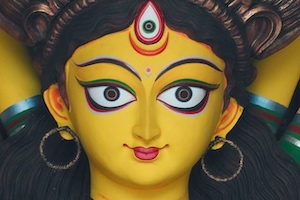Drought, flood warning for Gangetic delta
Times of India | 22 March 2025The alarming trends are highlighted in the UN's World Water Development Report 2025, released with the first-ever World Day for Glaciers on March 21. Reports suggest glacier meltwater contributes up to 65% of the Brahmaputra's flow and 70% of the Ganga's flow during droughts. The Upper Indus Basin also relies on glaciers for 41% of its total annual runoff. However, between 2000 and 2023, glaciers worldwide lost over 6,500 billion tons of ice, significantly reducing water and food security in regions dependent on glacial runoff.
The combination of extreme rainfall and glacial melt is projected to increase flood risks. If high emissions continue, peak flows of a 50-year return flood could rise by 51% in the Upper Indus Basin, 80% in the Upper Brahmaputra Basin, and a staggering 108% in the Upper Ganga Basin by the end of the century.
The melting of glaciers is a direct result of human-induced climate change. Michael Zemp, director of the World Glacier Monitoring Service, noted that glacial melt contributed 18 mm to global sea-level rise between 2022 and 2024. Even a millimetre of sea-level rise exposes an additional 200,000 to 300,000 people to annual flooding.
Kolkata, which depends on the Ganga for its water supply, faces severe consequences as glacier melt alters the river's flow patterns. Experts warn that as glacial meltwater increases, floods will become more frequent, only to be followed by declining water availability in the later decades. Seasonal water shortages will disrupt hydroelectric power generation, agriculture, and drinking water supplies. The High Mountain Asia region, home to nearly 100,000 glaciers, has experienced a glacial shrinkage of 5% to 21% between 2000 and 2023. These glaciers feed ten of Asia's largest rivers, including the Indus, Brahmaputra, and Ganga, which together support nearly a quarter of the world's population.
The risk of glacial lake outburst floods is also increasing as climate change accelerates glacial melt. More than 15 million people globally are vulnerable to GLOFs, with over 3 million at risk in India alone. In 2013, rapid snowmelt and intense rain triggered a catastrophic flood in Kedarnath, India, killing 6,000 people and destroying 30 hydropower plants. In 2023, a glacial lake outburst flood in Sikkim caused the collapse of the Teesta III hydroelectric dam, leaving over 100 people dead or missing.
Kolkata: The accelerating glacier melt in the Himalayas is intensifying both flood and drought risks across the Indo-Gangetic Plain, with Kolkata, being at the tail-end of IGP, at the receiving end of these climate-induced threats.
The alarming trends are highlighted in the UN's World Water Development Report 2025, released with the first-ever World Day for Glaciers on March 21. Reports suggest glacier meltwater contributes up to 65% of the Brahmaputra's flow and 70% of the Ganga's flow during droughts. The Upper Indus Basin also relies on glaciers for 41% of its total annual runoff. However, between 2000 and 2023, glaciers worldwide lost over 6,500 billion tons of ice, significantly reducing water and food security in regions dependent on glacial runoff.
The combination of extreme rainfall and glacial melt is projected to increase flood risks. If high emissions continue, peak flows of a 50-year return flood could rise by 51% in the Upper Indus Basin, 80% in the Upper Brahmaputra Basin, and a staggering 108% in the Upper Ganga Basin by the end of the century.
The melting of glaciers is a direct result of human-induced climate change. Michael Zemp, director of the World Glacier Monitoring Service, noted that glacial melt contributed 18 mm to global sea-level rise between 2022 and 2024. Even a millimetre of sea-level rise exposes an additional 200,000 to 300,000 people to annual flooding.
Kolkata, which depends on the Ganga for its water supply, faces severe consequences as glacier melt alters the river's flow patterns. Experts warn that as glacial meltwater increases, floods will become more frequent, only to be followed by declining water availability in the later decades. Seasonal water shortages will disrupt hydroelectric power generation, agriculture, and drinking water supplies. The High Mountain Asia region, home to nearly 100,000 glaciers, has experienced a glacial shrinkage of 5% to 21% between 2000 and 2023. These glaciers feed ten of Asia's largest rivers, including the Indus, Brahmaputra, and Ganga, which together support nearly a quarter of the world's population.
The risk of glacial lake outburst floods is also increasing as climate change accelerates glacial melt. More than 15 million people globally are vulnerable to GLOFs, with over 3 million at risk in India alone. In 2013, rapid snowmelt and intense rain triggered a catastrophic flood in Kedarnath, India, killing 6,000 people and destroying 30 hydropower plants. In 2023, a glacial lake outburst flood in Sikkim caused the collapse of the Teesta III hydroelectric dam, leaving over 100 people dead or missing.
